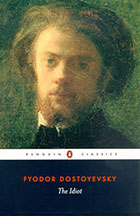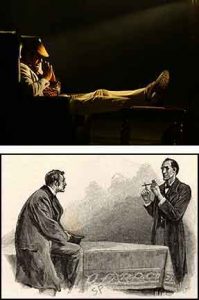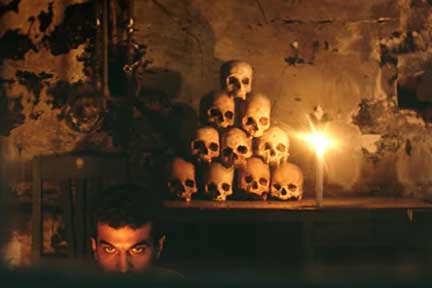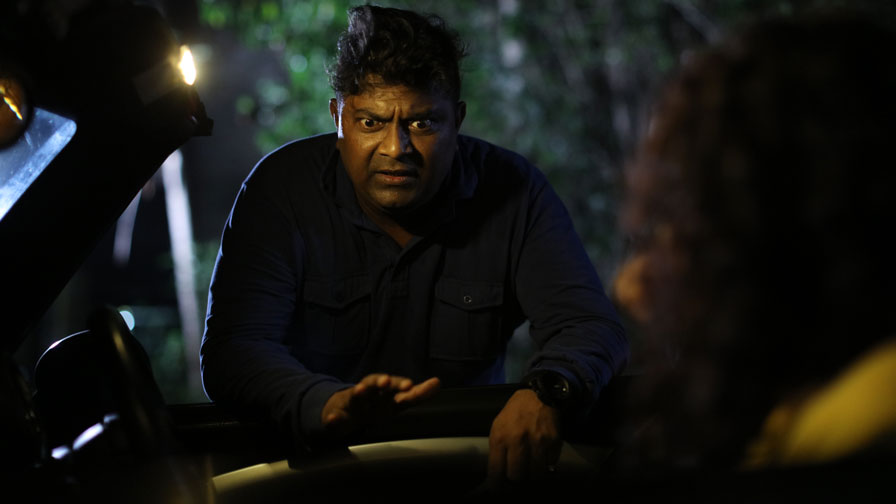A perspective peek at the nonet of films that have pitchforked Mysskin into the exalted realm of Kollywood’s cinematic sense
Straddling the Kollywood movie marquee in the last dozen plus years like a lodestar among his peers, Tamil film director Mysskin, nee Shanmugha Raja, since his trailblazing debut in 2006 with Chithiram Pesuthadi, has been the toast of elitist and eclectic film critics, especially in Tamil Nadu. So much so, he has been [highlight background=”#f79126″ color=”#ffffff”]valorised as a shrewd filmmaker whose films carry a certain idiom of visual expression to his narratives, of which much has been written about in eulogising terms. Given that they take an academic approach to film criticism glossing over the film’s otherwise mundane and banal reality.[/highlight]
Sure enough, basking in this newfound fame of critics’ fascination with his films, you have had the director unabashedly flaunting his erudition and education on cinema, from its aesthetics to its functionality, and naming the choicest celebrated auteurs who have influenced his appreciation and understanding of the craft, which “finds visual expression” in his own films.
 Born Shanmugha Raja, he went on to baptise himself professionally as Mysskin—much inspired by Prince Myshkin, the protagonist in Russian novelist Fyodor Dostoevsky’s celebrated classic novel The Idiot.
Born Shanmugha Raja, he went on to baptise himself professionally as Mysskin—much inspired by Prince Myshkin, the protagonist in Russian novelist Fyodor Dostoevsky’s celebrated classic novel The Idiot.
His low budget directorial debut Chithiram Pesudhadi coveted critical appreciation for his unique narrative style and mise en scene, while Anjathey, his sophomore essay, catapulted him into the big league of the Kollywood film industry, making him a name to watch out for with awe. His subsequent forays have brought him much appreciation and accolades for his visual style and directorial acumen. Additionally, [highlight background=”#f79126″ color=”#ffffff”]Mysskin has been hailed as one of the trendsetters of contemporary Tamil cinema, changing its otherwise accepted staid image of rolling out familiar flicks in an assembly line fashion.[/highlight]
Given his favourite subjects—his protagonists, caught on the wrong side of the law, are violent and bloody thirsty in nature—his films have also been termed as dark, dismal and dreary.
 In a Masterclass on Film Appreciation with film critic Baradwaj Rangan, you have Mysskin profoundly stating, “Cinema acts as a therapy when any good story is properly told. It also acts as a metaphor.” Citing Robert Bresson’s A Man Escaped and Akira Kurosawa’s Seven Samurai, among the films that have greatly influenced him, Mysskin eulogises, “Simplicity is the hallmark of a classic.” He goes on to say, “ If Leo Tolstoy and Fyodor Dostoevsky were alive today, they would be making films.”
In a Masterclass on Film Appreciation with film critic Baradwaj Rangan, you have Mysskin profoundly stating, “Cinema acts as a therapy when any good story is properly told. It also acts as a metaphor.” Citing Robert Bresson’s A Man Escaped and Akira Kurosawa’s Seven Samurai, among the films that have greatly influenced him, Mysskin eulogises, “Simplicity is the hallmark of a classic.” He goes on to say, “ If Leo Tolstoy and Fyodor Dostoevsky were alive today, they would be making films.”
In another interview, justifying the excessive, and graphic, violence in his latest film, Psycho, Mysskin says, “All sincere stories have death. All sincere stories have murders. All sincere stories are full of evil.” Further, the director has no qualms about blatantly justifying stalking as a means of expressing one’s love to another. “I like my protagonists to be like lightening. Their unpredictability creates an interest in my audience.”
If only one could fulsomely agree with Mysskin’s idea of cinema and appreciate his approach to film making, which is quite the contrarian to the classics and the masters of cinema and their influences that he so effusively cites in interview after interview!
 Of the nine films in his repertoire so far, nearly four of them virtually run on the time-tested template of most violent and virulent bloodletting, be it his very first foray, Chithiram Pesuthadi, wherein you have the protagonist turn hit man to stave off his debtors, or Anjathey, where you have the reckless hero indulging in violent tiffs, before turning into a new leaf to wear khaki. Thereafter, in Yuddam Sei you have a trail of bloody bodies as a CID officer embarks on a mission to trace his missing sister. Mugamoodi, inspired by various comic book heroes, has the hero chasing criminals who leave a trail of dead bodies.
Of the nine films in his repertoire so far, nearly four of them virtually run on the time-tested template of most violent and virulent bloodletting, be it his very first foray, Chithiram Pesuthadi, wherein you have the protagonist turn hit man to stave off his debtors, or Anjathey, where you have the reckless hero indulging in violent tiffs, before turning into a new leaf to wear khaki. Thereafter, in Yuddam Sei you have a trail of bloody bodies as a CID officer embarks on a mission to trace his missing sister. Mugamoodi, inspired by various comic book heroes, has the hero chasing criminals who leave a trail of dead bodies.
And not to discount his latest and most obnoxious, Psycho, whose serial killer hero systematically severs heads of females leaving their decapitated bodies in the open for the police to find.
 However, his Nandalala, incidentally inspired by Takeshi Kitano’s Kikujiro, is surprisingly sublime and sedate, marking a clear departure from his violent preoccupation. Other equally enterprising ensembles that provide a saner, subtler and much appreciable side of Mysskin are Onaayum Aattukkuttiyum, Pisasu and Thupparivaalan—the last being an ode to Sherlock Holmes and his Baker Street irregulars.
However, his Nandalala, incidentally inspired by Takeshi Kitano’s Kikujiro, is surprisingly sublime and sedate, marking a clear departure from his violent preoccupation. Other equally enterprising ensembles that provide a saner, subtler and much appreciable side of Mysskin are Onaayum Aattukkuttiyum, Pisasu and Thupparivaalan—the last being an ode to Sherlock Holmes and his Baker Street irregulars.
If Onaayum Aattukkuttiyum provides a comedic but realistic portrayal of how good Samaritans end up being culprits for having done a good deed of saving a dying man on the street, Pisasu with its ghost thriller angle spotlights on various social issues.
Otherwise, you have Mysskin faithfully following in the footsteps of Asian directors such as Takeshi Kitano, Kim Ki Duk, Park Chan-wook, and Miike Takashi known for their bloody, gut-wrenching violent portrayals, and American director Quentin Tarantino known for his macabre violent films full of blood, guts, and gore.
 It is understandable and somewhat acceptable that film directors such as Mysskin resort to stark depiction of visual violence as mise en scène acting as a crucible for social commentary on marginal lives ostracised by social opprobrium and driven by circumstances. However, one is unable to digest the fact that where subtlety and nuanced narration and suggestive visuals could effectively convey the angst and anxiety of these fringe people, Mysskin prefers distasteful and disgusting visualisation of violence to evoke empathy towards the victims. According to him, these persons, who come across as violent, if showered with affection, love and care, which job is conveniently left to female protagonists, change, and are otherwise benign souls but for mitigating circumstances.
It is understandable and somewhat acceptable that film directors such as Mysskin resort to stark depiction of visual violence as mise en scène acting as a crucible for social commentary on marginal lives ostracised by social opprobrium and driven by circumstances. However, one is unable to digest the fact that where subtlety and nuanced narration and suggestive visuals could effectively convey the angst and anxiety of these fringe people, Mysskin prefers distasteful and disgusting visualisation of violence to evoke empathy towards the victims. According to him, these persons, who come across as violent, if showered with affection, love and care, which job is conveniently left to female protagonists, change, and are otherwise benign souls but for mitigating circumstances.
It is at this juncture, one would hazard to state, that [highlight background=”#f79126″ color=”#ffffff”]cinema, given its overarching influence on susceptible and impressionable minds, needs certain modicum of sanctity. A certain ethical sense of sensitivity. An iota of sanitation. A dose of subtlety and sensitisation. Above all, certain aesthetics whose narrative does not cross the Rubicon of excessiveness to achieve its larger social and moralistic purpose.[/highlight]
For, cinema is a collective experience. The visual images received and assimilated in the receptacle of the darkened theatre is subconsciously internalised into an individual’s own moral and ethical dispositions and the cultural moorings that they have evolved from. The majority of these audiences are unable to differentiate between reel depictions and the harsh reality of their own everyday existence.
That being the case, it indeed becomes incumbent and imperative upon a film maker to realise his immense responsibility and ethical duty towards civil society and the disparate audiences that come to watch his films drawn by the media-created halo, and to ensure that his films do not corrupt the gullible or vitiate the discerning and more cinema literate viewers’ sensibilities.
Given that each person carries his/her own individual experience and understanding from the visual narrative they have been relentless bombarded with for the nearly three-hour-plus running time of the film—most of Mysskin’s films are that long—it becomes imperative that the film does not leave a bitter aftertaste.
 Mysskin may argue that his foregrounding of gut-wrenching violence is to specifically critique the social inequalities and the disenchantment that his protagonists find themselves in, in the world around them, and speak of the trauma of societal alienation, and therefore, in response, brutally lash out. But it is a given fact that, unlike in a majority of narrative cinema, the characters’ violent actions do not necessarily lead to “empathetic” resolution.
Mysskin may argue that his foregrounding of gut-wrenching violence is to specifically critique the social inequalities and the disenchantment that his protagonists find themselves in, in the world around them, and speak of the trauma of societal alienation, and therefore, in response, brutally lash out. But it is a given fact that, unlike in a majority of narrative cinema, the characters’ violent actions do not necessarily lead to “empathetic” resolution.
Instead, as researchers note, violence only creates a recursive loop, as is evidenced in the brutal killings, rapes and other forms of real-life violent incidents that one sees in real society today.
Instead of being a cathartic experience, the brutal cinemas of directors who push the representation of violence to its point of acme, repeatedly, using it as a justified means to legitimate ends, has only triggered a wave of such formulaic films to cash in on its success.
By their celebration of violence in the most stylistic fashion, such as in Mysskin’s Psycho, they become counter-productive to their intended objective, leading to misplaced formulations of masculinity, driven by the viewer’s sense of self-esteem and personal identity injured and defeated by social injustices.
Violent depictions of this sort only catalyse and instigate the minds of susceptible and vulnerable audiences to  mimic their theatrical experience in their own real existence as a form of valorous requirement, justifying their acts that run contrary to the very ethos of normal, law abiding, socially obligatory living.
mimic their theatrical experience in their own real existence as a form of valorous requirement, justifying their acts that run contrary to the very ethos of normal, law abiding, socially obligatory living.
It is here that Mysskin’s handful of films and his central motif of taming the violent brute in the form of an understanding, all-sacrificing female principle is contrarian to his own assimilated views on cinema, given his exhaustive reading and learnings about films and film making and cinema as an art form.
One would like to suggest that Mysskin works on the rather indulgent self-belief that the majority of the audiences who grace his films seeking “entertainment” would also be erudite enough to read the metaphors, symbolisms and allegories and appreciate the fine craft of cinematic excellence that he is trying to bring from his own knowledge and education.
[highlight background=”#f79126″ color=”#ffffff”]Unfortunately, these “cinema illiterate” as well as “poorly literate” masses who indulge in such “escapist entertainment” to rid themselves of their diurnal worries and problems, wistfully cheer at the goings on, being lost in the world of make-believe, unlike erudite critics who seek to gloss over the film’s inherent dangers at the peripheral level and its construct of images[/highlight], perforce, mandatorily mimic it in real life, being overawed by its enticing allurement to uplift themselves from their own station in society and living conditions.The larger and purposefully intended motif and metaphors of Mysskin’s films are simply lost in the high decibel volatile action and explicit execution, and thereby, fails the very idea of cinema that Mysskin venerates and espouses but himself shirks to take up. His mind weighed heavily by the commercial dynamics of a film’s destiny at the box office and the purse strings of the producers rather than aesthete aspects, Mysskin’s films end up striking a discordant, disquieting note.
 Gainsay, one could accede to a more pedantic and popular academic /theoretical approach that each of the actions has been specifically designed to convey a certain metaphor or to allegorise on the state of mind to the spectator. As to how much of these are meaningfully assimilated by the viewers who come primarily for “time-pass” and “entertainment” and become inured so as to eschew it themselves in their own real life, though, is rather moot.
Gainsay, one could accede to a more pedantic and popular academic /theoretical approach that each of the actions has been specifically designed to convey a certain metaphor or to allegorise on the state of mind to the spectator. As to how much of these are meaningfully assimilated by the viewers who come primarily for “time-pass” and “entertainment” and become inured so as to eschew it themselves in their own real life, though, is rather moot.
For, instances have been cited by police and investigative agencies of crimes committed in real life wherein culprits have confessed to being inspired by depictions of brutal graphic mutilations, including severed heads, in mainstream films such as Mysskin’s Psycho.
Mysskin’s arguments, as he depicts through his heroines, who, invariably, fall in love or are forced to fall in love and be empathetic with the troubled protagonists, and through their love, care, affection and understanding will reform, is just a fallacious one, as social realistic bespeak otherwise, much as directors may try to dismiss them as being a result of their cinemas.
While [highlight background=”#f79126″ color=”#ffffff”]films of the genre of Mysskin’s may make handsome material for contemporary critical discourses on flawed individuals and society at large, raising false hopes of acceptance of judiciously unpardonable crimes committed by the protagonist who in real life has to pay the price for such heinous acts, in reality they cannot be so easily dismissed and one needs to take a very strong stand against such films, the nature of their on-screen violence, and the absurd play of narratives that they bring into their equally trite and mundane tales.[/highlight]
It is an undeniable fact that films with violence have come to sadly represent a growing trend in the booming film industry of India. Take the case of Anurag Kashyap and his ilk whose every second film turn out to be a celebration of violence and machismo in its most depressing regularity. Such stylised superficiality only give audiences an adrenaline rush as they watch the proceedings in the darkened recess of film theatres when in actuality in real life things may not work the same with no time for rationale thought whatsoever.
 With filmmakers’ sense of commitment to mirror social reality hardly remaining untarnished by strong market force influences, despite cinema being described as an art form to creatively portray social reality, the drive to link the success of a film to box office returns with attendant commercial claptraps puts to shade the real intent of directors, much as critics may sing paeans about their products in esoteric terms.
With filmmakers’ sense of commitment to mirror social reality hardly remaining untarnished by strong market force influences, despite cinema being described as an art form to creatively portray social reality, the drive to link the success of a film to box office returns with attendant commercial claptraps puts to shade the real intent of directors, much as critics may sing paeans about their products in esoteric terms.
Profit prioritisation overpowering their films’ social and developmental goals, [highlight background=”#f79126″ color=”#ffffff”]obscenity, lewdness, and violence have emerged as an integral feature of Indian cinema and a sure-fire success[/highlight] to their own popularity and pulling power.
Finally, there are two schools of thought on this issue. One line of thinking being that films can never affect or reform the social body or events taking place within it. The other believing that the medium does have a direct or indirect impact on social streams, even though it may not be immediately perceptible. As usual, the ball is in the spectator’s court even as censor and certification boards lock horns with filmmakers on what is the done thing and what is not.
For now, fired by the patronising criticism of his films more from the perspective of film form and technique and their metaphors and allegories rather than the quality of content and the crass way it is treated and purveyed to gleeful audiences with wet, hanging tongues, Mysskin is enjoying a great gambol run with his kind of cinema.
Editor’s note: Earlier in the year, Super Deluxe, a film co-scripted by Mysskin had won the Film Critics Circle of India Award for the Best Indian Film of 2019
https://filmcriticscircle.com/journal/super-deluxe/
[divider top=”yes” anchor=”#” style=”default” divider_color=”#999999″ link_color=”#999999″ size=”2″ margin=”0″]
IMDB link — Mysskin
[youtube_advanced url=”https://www.youtube.com/watch?v=dInk9M6kKns” width=”300″ height=”200″ responsive=”no” controls=”yes” autohide=”alt” autoplay=”no” mute=”no” loop=”no” rel=”yes” fs=”yes” modestbranding=”no” theme=”dark” playsinline=”no”]





Leave a Reply
You must be logged in to post a comment.